| ADHD Awareness |
| All about this course This ADHD course will explore the environmental and genetic factors that could increase the risk of ADHD. We will look at the signs and symptoms of ADHD and the three main categories of ADHD. We will then look at the criteria that must be met before a formal diagnosis of ADHD can be made. We will also look at the different types of professionals that can carry out the assessment and what is involved. Finally, we will then go onto look at the support that is available for children with ADHD including within education, as well as support for parents. We will also explore the main policies and legislations in place surrounding ADHD. You will earn 3 CPD points on completion of the course. Fully CPD registered Completed online with instant downloadable certificate Fully printed certificate posted next day Covers all required legislation and practices Complete the online multiple choice assessment as many times as you need to pass Units covered Unit 1 – Introduction to ADHD – In our first unit we will be exploring what ADHD is. We will also look at how it is often linked to other medical conditions. As well as explore some theories about what causes ADHD. Unit 2 – Causes of ADHD - In this unit we will look at how environment and genetic factors could increase the risk of ADHD, as well as looking at why ADHD is so widely misunderstood. Unit 3 – Signs and symptoms of ADHD - This unit will look at how you can recognise signs and symptoms of children with ADHD, as well as how they can be presented differently in girls and boys. Unit 4 – Diagnosing ADHD - In this unit we will look at what criteria needs to be met before a formal diagnosis can be made. As well as how to support those affected by the diagnosis. Unit 5 – Living with ADHD – This unit will be look at the types of support that can be put into place to help people with ADHD, as well as their families. Unit 6 – ADHD within education – This unit will look at what difficulties there is surrounding those with ADHD in education. It will also look at how teacher can help to support them. Unit 7 – Understanding the law surrounding special educational needs and ADHD – In our final unit we will explore the legislations surrounding ADHD and why they are important to have in place.
Price: 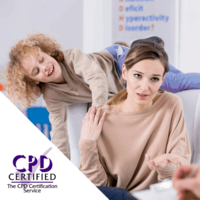 |
| Administering Medication |
| All about this course Understanding how to correctly administer medication is essential for anyone working in care. This course teaches the basics of storing, administering and disposing of medication and the legislation behind this. Various types of medication and methods of administration are also covered. This course is perfect for anyone in a care role. This can include nurses, doctors, health care assistants, care home workers, childcare practitioners, as well as a variety of other job roles where a knowledge of medication is required. In order to complete the course, you must achieve 80% or more in the final multiple choice quiz. You will earn 2 CPD points on completion of the course. Fully CPD registered Completed online with instant downloadable certificate Fully printed certificate posted next day Covers all required legislation and practices Complete the online multiple choice assessment as many times as you need to pass Units covered Unit 1 – Introduction to Medication: Our first unit will introduction different medications and what they may be used to treat. We will look at how medication can be taken and the process of getting prescriptions. We will also look at possible side effects and reactions, as well as the roles and responsibilities of people who administer medication. Unit 2 – Receiving, Storing and Disposing of Medication: This next unit will consider the factors to take into account when both storing and disposing of medication and how both of these should be carried out properly. It will also look at who might be at risk if medication is not properly stored and disposed of and why this might be the case. Unit 3 – The Rights and Support of Individuals when Managing and Using Medication: This unit will consider the importance of the rights of individuals who take medication and how they can be supported when they are using medication. The promotion of independence is a fundamental aspect of a person-centred approach to care and support, so any opportunity to enable an individual to manage their own medication should be taken, as long as they will not be put at risk. Unit 4 – Laws and Legislation: Our final unit considers the legislation for each of these areas and goes on to look at how policies are developed so that the procedures and standards that everyone works within are consistent and robust. We will look at examples of policies that care workers might come across and then finish off by looking at two case studies that show how legislation and policies are put into practice.
Price: 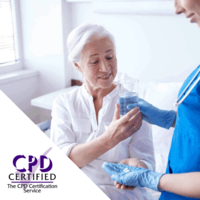 |
| Allergen Awareness |
| All about this course A strong understanding of food allergens is something everyone working in the food and drink industry should have. With the potential to have a major impact on customers, it is essential for food handlers to have undergone suitable allergen awareness training. This Allergen Awareness course meets this requirement. Written by expert food handlers, the course covers various food allergen laws as well as all of the major allergens which you should be aware of. Contamination control is explored to ensure that you can minimised the risk of emergency situations. This food allegers course is designed for anyone working with food. This could be people working in catering, retail or manufacturing. In order to complete the course, you must achieve 80% or more in the final multiple choice quiz. You will earn 2 CPD points on completion of the course. Fully CPD registered Completed online with instant downloadable certificate Fully printed certificate posted next day Covers all required legislation and practices Complete the online multiple choice assessment as many times as you need to pass Units covered Unit 1 – The law surrounding allergens: Our first unit of this course will cover the different laws regarding food allergens and how these affect various food businesses. We will also look at some food allergen case studies to begin to understand the importance of this area of study and the consequences when legislation is not followed. Unit 2 – Allergies, intolerance and coeliac disease: Next up we will look at different allergies and intolerances. This will require an in-depth look at the 14 named allergens and exploring what each of these are. We will also consider hidden allergens as well as what happens when people consume something they are allergic to. Anaphylaxis, coeliac disease and gluten intolerances will also be covered. Unit 3 – Considerations of allergies in the workplace: The correct training for staff and hazard analysis procedures are essential for all food businesses and something that we will look at here. Food suppliers, storage and various considerations will be covered so that you have a strong knowledge of how to reduce risk. Unit 4 – Contamination control: In this final unit we cover contamination control. This will include personal hygiene and ways to ensure food premises and equipment are cleaned correctly. Record keeping and other ways to reduce cross contamination will be explained as well as the correct methods of reporting and dealing with emergency situations.
Price: 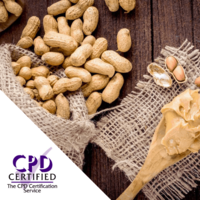 |
| Anxiety Awareness |
| All about this course In this Anxiety Awareness course we will study various triggers of anxiety and look into how these can lead to panic attacks. Situations will be explained and the causes of anxiety explained. Finally the course covers methods of overcoming anxiety and activities which can be done to help anxiety. This course is perfect for anyone that works in a mental health role or is in a position where people they work with may suffer from anxiety. This course is also great for people who suffer with anxiety themselves. In order to complete the course, you must achieve 80% or more in the final multiple choice quiz. You will earn 2 CPD points on completion of the course. Fully CPD registered Completed online with instant downloadable certificate Fully printed certificate posted next day Covers all required legislation and practices Complete the online multiple choice assessment as many times as you need to pass Units covered Unit 1 – Understanding anxiety: In this first unit we will broadly look at what anxiety is and how anxiety can lead to panic attacks. We will also examine the various symptoms and causes of panic attacks. After this we will look at different causes of anxiety such as biological causes, life experiences, physical and personal causes. Unit 2 – Situations where people may experience anxiety: Throughout this unit, we will cover situations where anxiety can be triggered, as well as ways in which an individual may seek to avoid things which cause their anxiety. The situations that we will explored include phobias, crowded places, new situations and traumatic memories. Unit 3 – The effects of anxiety on people: We will now look at how anxiety effects different people including physical, behavioural and psychological changes in this section. The unit will also cover various issues that anxiety can have on individuals. Unit 4 – Overcoming anxiety: This part of the course will consider the ways that individuals can work to overcome anxiety and different techniques that can be used. We will look at the cycle of negative thinking associated with anxiety, then we will move on to explore different personality types of people suffering with anxiety. The unit will then cover ways to overcome anxiety such as breathing exercises, diet, avoiding substances and speaking to others about the issue. Unit 5 – Activities and resources to help anxiety: In our final unit we will be looking at why it can sometimes be difficult for individuals who have anxiety to find something that is enjoyable to them. But if they can find a way to indulge in an activity then it can be great in helping them reduce their anxiety, if only for a short time. We cover further activities and resources to help anxiety.
Price: 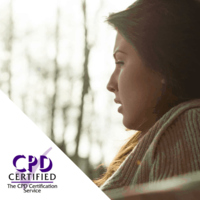 |
| Asbestos Awareness |
| All about this course In this asbestos course we will be looking at the current legislation (The Control of Asbestos Regulations - CAR 2012) relating to asbestos safety. We will look at the reason asbestos was banned and why it is so dangerous to people’s health. The most likely people to be affected by asbestos are outlined as well as risk assessments that can be carried out minimise the chances of exposure. This course is perfect for anyone who works as asbestos removal workers, people who are in charge of maintaining buildings and maintenance equipment, workers in construction, demolishment and refurbishment. In order to complete the course, you must achieve 80% or more in the final multiple choice quiz. You will earn 3 CPD points on completion of the course. Fully CPD registered Completed online with instant downloadable certificate Fully printed certificate posted next day Covers all required legislation and practices Complete the online multiple choice assessment as many times as you need to pass Units covered Unit 1 – Introduction to Asbestos - In our first unit we be looking into what asbestos is and where asbestos can be found in the UK. In addition we will be looking at where it use to be used and why asbestos is still in buildings. Unit 2 – Risks of asbestos to health – In this unit we will be looking at why asbestos is a hidden killer and why it is so dangerous. We will also look at the 4 main asbestos-related diseases. Unit 3 – Asbestos legal framework - This unit will look at the legislation that are in place surrounding asbestos. We will explore how the legislation and legal framework try to prevent exposure of asbestos in the workplace. Unit 4 – Assessing the risk of asbestos – This unit will look at why the law requires people to do asbestos risk assessments. You will also learn the steps that are taken when carrying out a risk assessment and why it is important. Unit 5 – Emergency procedures – In our final unit we will be looking at the types of asbestos-related emergencies that workers can come across and the actions that should be taken in the event of asbestos being discovered unexpectedly.
Price: 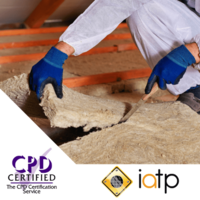 |
| Autism Awareness |
| All about this course This Autism course will explore the autistic spectrum and look in detail at the different types of autism. The course covers the potential causes of autism and the misconceptions that people have about the causes. We will then look in detail at the steps involved in getting a diagnosis and what to expect during the assessment. Medication that can be used to help people manage their symptoms and the side effects of these will be explained. Finally we explore how autism can affect learning and the steps that can be put into place to help children in education. This course is perfect for anyone working with people who are autistic as well as teachers, carers and educators who need to understand how to adapt their methods for autistic people. You will earn 3 CPD points on completion of the course. Fully CPD registered Completed online with instant downloadable certificate Fully printed certificate posted next day Covers all required legislation and practices Complete the online multiple choice assessment as many times as you need to pass Units covered Unit 1 – Introduction to Autism – In our first unit we will be looking at the autism spectrum and statistics relating to autism in the UK. We will then go onto look at the different forms of autism including Asperger’s syndrome. Unit 2 – Causes and Risk Factors for Autism – This unit will be exploring the environment and genetic factors that could increase the risk of autism. Then we will look at some misconceptions about the causes of autism. Unit 3 – Signs and Symptoms of Autism – In this unit we will be looking at what the most common signs and symptoms of autism are, then we will look at how to make sure the behaviour of autistic people doesn’t impact on their quality of life. Unit 4 – Diagnosing Autism – This unit will look at what criteria must be met before a formal diagnosis can be made and what is included in the assessment. We will then look at the best ways to cope with a diagnosis of autism. Unit 5 – Living with Autism – In this unit we will look at the medication available for people with autism and some of the potential side effects, as well as the ways specialist intervention can help to manage autism. Unit 6 – Autism within Education – In our final unit we will be exploring autism in education and we will look at the ways to help children with autism within education.
Price: 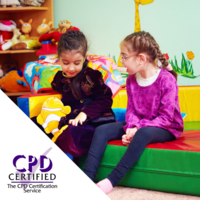 |
| Bipolar Disorder Awareness |
| All about this course Bipolar Disorder is often misunderstood. This course seeks to inform you of what this mental illness is and how it affects sufferers and those around them. The symptoms of Bipolar will be explained as well as successful techniques to deal with both manic and depressive episodes. This course is perfect for anyone who works with or simply knows a person with Bipolar Disorder. With the main aspects of Bipolar explained, students will finish the course with a much deeper knowledge of how to assist people who have this mental illness. In order to complete the course, you must achieve 80% or more in the final multiple choice quiz. You will earn 2 CPD points on completion of the course. Fully CPD registered Completed online with instant downloadable certificate Fully printed certificate posted next day Covers all required legislation and practices Complete the online multiple choice assessment as many times as you need to pass Units covered Unit 1 – Understanding Bipolar Disorder: In this first unit we will look at different types of bipolar disorder and how these are categorised. We will also consider different factors which can contribute to an increased risk of developing bipolar disorder. These factors include genetic, chemical, personality and environmental differences. Each one will be explored and the risks associated examined. Unit 2 – Experiences of individuals with Bipolar Disorder: Throughout this section of the course we will look at the symptoms associated with bipolar disorder. We will cover both manic and depressive symptoms as well as the feelings and behaviours associated with each. Unit 3 – How Bipolar Disorder affects others: Now we will look at how bipolar disorder affects people and those around them. This will include close family, friends, parents as well as the stigma attached to such a mental issue. Here we will also look at issues that bipolar disorder can cause such as relationship, health, work and family issues. Unit 4 – Medical intervention and managing episodes: In this part of the course we will consider different types of interventions and ways to manage episodes. We will look at a wide variety of methods as well as the four main types of medical intervention that may be needed for someone who has bipolar disorder including - medication, hospitalisation, therapy and referral to a specialist, such as a psychiatrist. Unit 5 – How to help people with Bipolar Disorder: In this final unit of the course we will look at alternative ways to help those with bipolar disorder and different lines of support available. These include local support groups, education regarding the condition and health centres.
Price: 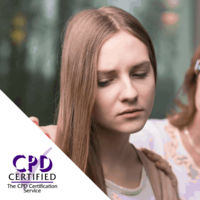 |
| Bronze package |
| All about this course package This Safer Recruitment course is perfect for people who work in recruitment or are in charge or recruiting new staff for their business. It will cover all the steps you need to take in preparing to recruit, right through to when the new candidate starts their job. This course will also cover the legislation and policy that you need to be aware of when recruiting. This course will look at the best places to advertise jobs and why, how to speed up the process of sifting through applications and what the key details are to look out for. It will also look at what special requirements applicants may need and how to make sure you comply to them. This course will also look at The Equality Act 2010 and what protected characteristics means. It will also look at the types of possible discrimination organisations must be aware of in the recruitment process. Fully CPD registered Completed online with instant downloadable certificate Fully printed certificate posted next day Covers all required legislation and practices Complete the online multiple choice assessment as many times as you need to pass Units covered Unit 1 – Preparing to Recruit – In our first unit we will be looking at the early stages of recruitment and what the importance of the job description, as well as the person specification in getting the right applicants for the role. Unit 2 – The Selection Process – This unit will be looking at the process that takes place once job adverts have been replied to, as well as ways in which organisations can ensure they are not acting in a discriminatory way. Unit 3 – The Interview Process – In this unit we will be looking at what happens once candidates have been chosen to take part in an interview, as well as some questions and techniques that organisations can use to ensure they choose the most appropriate candidate. Unit 4 – After the Interview – In this unit we will explore the processes that an organisation puts into place once initial interviews have been completed, it will also look at contacting referees and the types of references. Unit 5 – Pre Appointment – In this unit will be looking at the importance of checks, including DBS checks, criminal record checks, as well as health checks. It will also look at how to ensure a candidate is eligible to work in the UK legally. Unit 6 - Starting Employment - In our final unit we will look at the importance of ensuring health and safery in the work place, as well as what happens during probationary period, as well as the benefits of them being supervised.
Price: 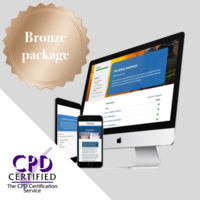 |
| Care Home CPD bundle |
| Certificates for courses in this bundle are downloadable only - a hard copy is not sent to you. All about this course bundle Sign up for our Care Homes CPD bundle and access a variety of courses for people working with the elderly or any form of care setting. When working in care, CPD is vital to ensure that you have a working knowledge of current practices. With this package you can have access to CPD courses at all times and work through each at your own pace. After each course in this package you can download a copy of your certificate which is fully CPD accredited. This means that each course has passed the stringent requirements et by the CPD Certification Service and our certification is accepted by industry bodies including the CQC. Enrol any time on to this Care Homes CPD bundle and enjoy a full 12 months of access to each course. Fully CPD registered Completed online with instant downloadable certificate Multiple courses included Covers all required legislation and practices Complete the online multiple choice assessment as many times as you need to pass 12 month access Courses covered
Price: 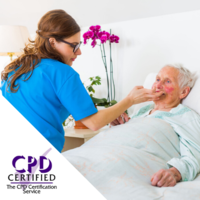 |
| Child Sexual Exploitation |
| All about this course This Child sexual exploitation course will cover everything that you need to know about gaining knowledge on Child Sexual Exploitation. This course will go into detail about what child sexual exploitation is, as well as who is at increased risk of being sexually exploited. The myths about child sexual exploitation will also be covered so that students have a clearer understanding. The emotions that accompany child sexual exploitation will also be covered and students will learn that it can be hard to predict how a child will react. In order to complete the course, you must achieve 80% or more in the final multiple choice quiz. You will earn 2 CPD points on completion of the course. Fully CPD registered Completed online with instant downloadable certificate Fully printed certificate posted next day Covers all hazards that can lead to slips and trips Explains the risks of falls Counted as staff training on health and safety Complete the online multiple choice assessment as many times as you need to pass Units covered Unit 1 - Introduction to Child Sexual Exploitation - In our first unit you will explore why it is important to have good knowledge on child sexual exploitation and you will cover what child sexual exploitation is. Unit 2 -What increases the risk of children and young people becoming involved in CSE? - In this unit you will look at the factors that can increase a child's risk more than other children. You will explore a number of case studies too. Unit 3 - How children and young people respond to CSE - This unit will consider the different emotions and reactions that children and young people may have to child sexual exploitation, it will also cover why many young people never disclose that they are being abused. Unit 4 - What can I do? Reporting child sexual exploitation - In our final unit you will consider the responsibilities of practitioners in responding to concerns about child sexual exploitation and the roles of the different agencies.
Price: 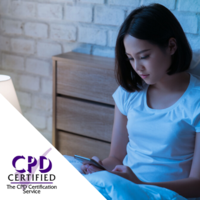 |
| Childcare CPD bundle |
| Certificates for courses in this bundle are downloadable only - a hard copy is not sent to you. All about this course bundle Our Childcare CPD course bundle is designed for anyone working with children and is particularly popular with day nurseries. The package allows each user to access over 35 courses including safeguarding, food hygiene and mental health. With this package, childcare workers do not have to worry about their CPD as everything is covered. The package includes all of the courses we offer that are relevant for childcare and will allow you and your colleagues to ensure CPD is carried out in a variety of areas. Ofsted approved CPD is a requirement of anyone working in childcare and the CPD records of staff members will be checked during inspections. Our courses fulfil this requirement and give access to a wide range of courses relevant to childcare. Fully CPD registered Completed online with instant downloadable certificate Multiple courses included Covers all required legislation and practices Complete the online multiple choice assessment as many times as you need to pass 12 month access Courses covered
Price: 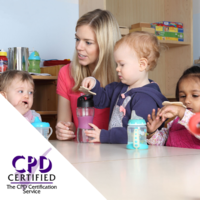 |
| Children's Mental Health |
| All about this course This Children's Mental Health course covers everything that you need to know about the mental health of young people. The course includes the mental health spectrum and you will explore the risk factors that can influence the onset of mental health difficulties in children. Child development will be covered in detail, so that you can see the impact of child development interruptions on a child's mental health. We will also explore the signs and symptoms for each mental health problem and how it can affect others, as well as the individual experiencing the mental health difficulties. The social consequences of mental health difficulties are covered in detail and the help and support you can offer a child who is experiencing mental health difficulties. This course is suitable for people who work with children, including teachers, social workers, nursery practitioners and doctors. In order to complete the course, you must achieve 80% or more in the final multiple choice quiz. You will earn 3 CPD points on completion of the course. Fully CPD registered Completed online with instant downloadable certificate Fully printed certificate posted next day Covers a variety of mental health difficulties Explains the common mental health issues children may have Counted as staff training on mental health Complete the online multiple choice assessment as many times as you need to pass Units covered Unit 1 - Introduction to mental health in children - In our first unit we will be exploring the general concept of mental health and ill mental health, we will be defining each, this unit will also examine the possible risk factors that can lead to ill mental health and what some of the protective factors are. Unit 2 - Understanding child development - In this unit we will explore child development and how if it is interrupted it may affect a child's mental health. The unit will also examine some of the key concepts of attachment and where the theories originated from. The unit will finish off by exploring the risk-taking behaviours that might affect older children and what impact these may have on mental health and the long-term outcomes. Unit 3 - Mental health problems - This unit will consider some of the common mental health problems and how they are recognised, we will look at the signs and symptoms of each, the unit will finish off by exploring the conditions that can increase the vulnerability of an individual developing a mental health problem and the impact that it can have on them. Unit 4 - Associated problems - The unit will start off by exploring some of the issues associated with mental health problems that can affect children in the short term and the long term and consider some of the physical and emotional effects of mental health difficulties. The unit will finish off by looking at some of the social consequences of mental health difficulties and the long-term. consequences of them. This unit will look at the overall requirements of noise risk assessment in the Control of Noise at Work Regulations 2005, we will also explore why risk assessments are important and will cover the legal, moral and financial reasons. We will also explore the steps that should be taken when carrying out a risk assessment. Unit 5 - Help and Support - This unit will start off by explaining how you can help a child or a young person who is experiencing ill mental health and the services out there to help them, such as medical interventions and counselling. Unit 6 - Promoting positive mental health - In our final unit we will be considering how we can promote positive mental health and why this is a key factor in reducing the possible onset of mental health difficulties, the unit will then finish by exploring the legislation that applies to children in terms of their mental health and how children can apply their rights in an equal way and not be discriminated against because of any form of mental health problems.
Price: 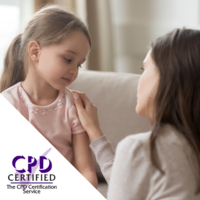 |
| Confined Spaces |
| All about this course Our Confined Spaces course will cover everything that you need to know about confined spaces, including why confined spaces are so dangerous, as well as the hazards associated with them. We will also cover the legislation on confined spaces, including the Health and Safety at Work 1974, Management of Health and Safety at Work Regulations 1999, as well as the Confined Spaces Regulation 1997. This course looks at why it is important to do risk assessments and look at the responsibilities surrounding risk assessments, we will also look at the 5 steps that should be taken when carrying out a risk assessment. Covering units of risk assessments specifically for smaller spaces as well as various equipment that can be used, upon completion students will have a much deeper knowledge of how to reduce the level of danger when working in confined spaces. Training for staff and special consideration that need to be taken into account will be explained in detail. We finish off by looking at the possible emergencies at work and will look at some examples of confined space emergencies and the types of confined space rescue. In order to complete the course, you must achieve 80% or more in the final multiple choice quiz. Fully CPD registered Completed online with instant downloadable certificate Fully printed certificate posted next day Covers all required legislation and practices Explains the risks and best practices when working in confined spaces Counted as staff training for confined spaces Complete the online multiple choice assessment as many times as you need to pass Units covered Unit 1 - Introduction to Confined Spaces - In our first unit we will be introduced to what a confined space is and will look at some examples of confined spaces, we will also explore the legislation on confined spaces. Unit 2 - Identifying, Assessing and Controlling risks - In this unit we will explore the importance of risk assessments and what the law requires, we will also look at the legal, moral and financial reasons for carrying out a risk assessment. Unit 3 - Safety Aspects for Consideration - This unit will explore the requirements for controls in the Confined Spaces Regulation (1997) it will also look at what a safe system of work is and will explore the sections that should be covered in a confined space safe system of work. Unit 4 - Training and Safety Equipment - This unit will explore the confined space training and look at why it is required, we will explore some of the legislation that requires employers to provide information, instruction and training to employees. We will also explore the other types of safety equipment that is used. Unit 5 - Emergency Procedures - In our final unit we will be introduced to emergencies at work and will look at some examples of confined space emergencies and types of confined space rescue. We will also explore the requirements for the following emergency arrangements in further detail.
Price: 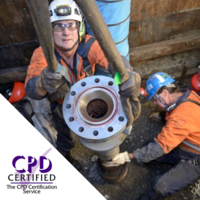 |
| COSHH Awareness |
| All about this course This course will introduce you to COSHH and explore what a hazardous substance is. We will also explore the regulations surrounding COSHH, as well as employer and employee duties under the regulations. The health risks that could be caused by being exposed to hazardous substances will be explained, as well as who could be affected by each substance. Hazardous symbols will be introduced and their meanings explained, as well as the steps taken to carry out COSHH assessments and reduce risks. In order to complete the course, you must achieve 80% or more in the final multiple choice quiz. You will earn 3 CPD points on completion of the course. Fully CPD registered Completed online with instant downloadable certificate Fully printed certificate posted next day Covers all required legislation and practices Complete the online multiple choice assessment as many times as you need to pass Units covered Unit 1 – Introduction to COSHH – In our first unit we will be exploring what COSHH legislation is for, including what is a hazardous substance and what is covered under the regulations. We will also be looking at how a person can come into contact with hazardous substances and the job roles that are high risk. Unit 2 – COSHH Legislation – In this unit we will be looking at the history of legislations relating to hazardous substances in the work place, as well as the different legal requirements and legislations. We will also look at enforcement action that can be taken if a duty holder is found to be in breach of the regulations. Unit 3 – Health Risks Associated with Hazardous Substances – This unit will explore who can be affected if workers suffer from ill-health as a result of exposure to chemicals. It will also explore the common health hazards associated with hazardous substances in the workplace. Unit 4 – Identifying Hazardous Substances in the Workplace – In this unit we will be looking at the different types of hazardous substance that can be found in the workplace and the methods of identifying them. We will then look at how important safety data sheets are and how to use them. Unit 5 – COSHH Risk Assessment and Control Measures – In our final unit we will be looking at why it is important to do risk assessments in the work place. The steps to carry out a COSHH assessment will be explained, as well as the arrangements for accidents, incidents and emergencies that could occur.
Price: 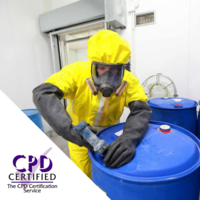 |
| Depression Awareness |
| All about this course This Depression Awareness course is designed to help you have better understand what depression is and how it is treated. The signs and symptoms of depression will be covered, as well as common methods of treatment. Depression is one of the most common mental health disorder in the world and yet not a lot of people really understand what it is. This course aims to improve the knowledge of students and raise their awareness of how to spot signs of depression and help to help someone who is depressed. In order to complete the course, you must achieve 80% or more in the final multiple choice quiz. You will earn 2 CPD points on completion of the course. Fully CPD registered Completed online with instant downloadable certificate Fully printed certificate posted next day Covers all required legislation and practices Complete the online multiple choice assessment as many times as you need to pass Units covered Unit 1 – Understanding Depression: In this first unit we will broadly look at what depression is and the typical experiences a person has when experiencing depression. This will lead us on to behaviours that may show when people are depressed as well as some of the main factors that can trigger depression such as genetic, biochemical, psychological and behavioural causes. Unit 2 – Feelings experienced with depression: Throughout this part of the course we will move on to look at the symptoms of depression and how people can show signs of being depressed. The unit will cover various areas such as feelings of guilt, fear, hypercriticism and isolation. Unit 3 – How depression affects a persons life: Depression, at its most severe, can have a devastating effect on individuals and their ability to live their life in a way which is fulfilling and meaningful. In this unit we will look at how depression affects individuals in a number of ways including physically, behaviourally and cognitively. Unit 4 – How depression affects others: Not only does depression affect the sufferer, it also has an impact on those closest to them. Here we look at how depression impacts the lives of family and friends that are closest to the person and the various impacts depression can have on a life. These will include family strain, daily life demands, Seasonal Affective Disorder, financial issues and physical health. Unit 5 – Resources and treatment: In this final unit we will look at resources and treatments that people with depression can go to for assistance. A wide variety of resources and advice is available to people with depression and understanding how to access this is vital in recovery.
Price: 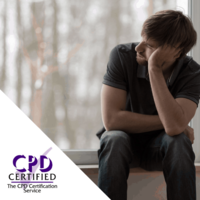 |
| Deprivation of Liberty Safeguards (DoLS) |
| All about this course This online course is perfect for anyone that is looking to gain a strong knowledge of Deprivation of Liberty Safeguards and how they relate to the Mental Capacity Act. Throughout the course a full understanding of what a deprivation of liberty is will be obtained. Students will also cover when a deprivation can be put in place and the assessments required for this. Anyone working with elderly people of those with a mental disability is suitable for this course. Upon completion, students receive their Deprivation of Liberty Safeguards certificate which recognises your achievement. In order to complete the course, you must achieve 80% or more in the final multiple choice quiz. You will earn 2 CPD points on completion of the course. Fully CPD registered Completed online with instant downloadable certificate Fully printed certificate posted next day Covers all required legislation and practices Complete the online multiple choice assessment as many times as you need to pass Units covered Unit 1 – Defining Deprivation of Liberty: For the first unit of this course we will look at the definition of Deprivation of Liberty and try to understand more about capacity. The Mental Capacity Act will be fully explained here as well as a number of other acts and pieces of legislation. We will look at capacity in detail and understand how this relates to DoLS. Unit 2 – Identifying deprivation: In this unit we will look at deprivation and try to identify situations where people are restricted in what they do. The role of AMHP will be explained as well as a number of case studies that will help your ability to identify deprivation. The unit also covers forms of abuse and the Human Rights Act. Unit 3 – DoLs and the five key principles of the MCA: This unit will look at the 5 principles of the Mental Capacity Act and how these relate to DoLS. We will cover the 5 principles in detail as well as things to consider for each. This will help you to ensure the way you work with individuals is within the boundaries of the MCA. Unit 4 – Authorising deprivation: Next we will look at how deprivation is authorised and when it is necessary to deprive someone of the freedom to carry out certain tasks. This unit will focus on the assessment process and help you to better understand when it is necessary to deprive someone of liberty. We will also look at best interests and carer liability during this process. Unit 5 – Record keepin Record keeping for Deprivation of Liberty Safeguarding is extremely important and something that is covered in this final unit of the course. Communication, accountability and risk assessments will be covered in detail here and the different records that must be kept when depriving someone of liberty.
Price: 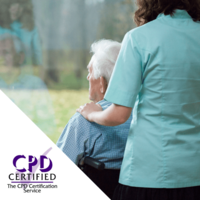 |
| DSE Awareness |
| All about this course In this DSE course we will be looking at the definition of DSE and the work station, as well as the health risks that can be caused by spending extended periods of time using display equipment. We will look at the responsibilities of the employee which ties in with the Health & Safety at Work Act 1974, as well as the regulations and requirements when using DSE. Assessments on work stations will be explained, as well as how to plan the perfect environment to avoid stress and strain on DSE users. Finally, it will also explain how users should adopt healthy postures and apply safe techniques. This course is perfect for anyone working in an office environment. It covers the risks and best practices to ensure staff are knowledgable about DSE injuries and able to put measures in place to reduce the risks of any issues. In order to complete the course, you must achieve 80% or more in the final multiple choice quiz. You will earn 3 CPD points on completion of the course. Fully CPD registered Completed online with instant downloadable certificate Fully printed certificate posted next day Covers all required legislation and practices Complete the online multiple choice assessment as many times as you need to pass Units covered Unit 1 – Introduction to DSE – In our first unit we will explain the definition of Display Screen Equipment, the definition of a user and a workstation. We will also look at the injuries that can be caused from working with DSE. Unit 2 – DSE Assessments – In this unit it will be covering the types of DSE assessments and how to carry them out. This will include the different types of DSE users and how they can carry out their risk assessment. Unit 3 – Planning the Perfect Workstation – This unit will look at the requirements for DSE and how this helps you set the perfect work station. This includes the screens, hand support, cleaning, keyboard technique, the chair, working environment. After this unit you will understand how everything should be set out to be in line with the DSE requirements. Unit 4 – The User’s Wellbeing – In our final unit we will explore ways to improve the users wellbeing , this includes exercises, having eye tests, taking breaks, changing positions and making sure the body is positioned properly at the desk.
Price: 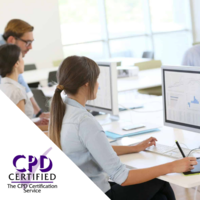 |
| FGM Awareness |
| All about this course Thousands of new cases of female genital mutilation (FGM) are reported every year in the UK alone. This barbaric practice must be stopped and this FGM Awareness course is the perfect way to raise your understanding of the practice and improve your ability to spot the warning signs. This course covers the various types of FGM, the legislations that are in place to protect girls and young women from becoming a victim and how to recognise the signs when someone is vulnerable to FGM. The course is perfect for anyone working with children and teenagers such as teachers, care workers, nurses, nursery practitioners and people in healthcare. In order to complete the course, you must achieve 80% or more in the final multiple choice quiz. You will earn 3 CPD points on completion of the course. Fully CPD registered Completed online with instant downloadable certificate Fully printed certificate posted next day Covers all required legislation and practices Complete the online multiple choice assessment as many times as you need to pass Units covered Unit 1 – Introduction to FGM: In the first unit of this course we will look at what FGM is and how young girls are impacted by this practice. The different countries and regions that commonly practice FGM will be explained, as well as the reasons why it is practiced including religious, social and cultural norms. Unit 2 – Types of FGM: This unit will look at the different types of female genital mutilation and the 4 main types of FGM practiced. The people who may carry out FGM will be introduced and the risks of each type explained. We will also look at the ‘medicalisation’ of FGM and what this means. Unit 3 – The Law Surrounding FGM: This unit will examine key policies and guidance put in place to protect individuals from FGM. Methods of how governments and groups are working to eradicate FGM will be explained. Various ways to become better educated in the practices of FGM will be covered, as well social change initiatives. Unit 4 – Recognising the signs of FGM: Next we will look at the health issues associated with FGM and the common effects of the practice. Both short and long term complications of FGM will be explained as well as common warning signs to look for in someone who may be at risk of this type of abuse. Unit 5 – Reporting Concerns: Finally we will move on to look at how concerns should be reported regarding FGM. The mandatory duties of various people will be explained, as well as how to assess the risk of FGM. Support, communication and reporting channels will be covered so that you know exactly what to do if you suspect someone may be at risk of FGM.
Price: 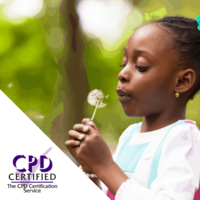 |
| Fire Safety Awareness |
| All about this course This course is suitable for anyone working in any industry to get a good knowledge of fire safety. It is a regulatory requirement that all employees, regardless of the industry they work in, undergo some form of fire safety training and this course meets this requirement. Our Fire Safety Awareness course is suitable for people in any industry and any level of employment including employees, managers and supervisors. Covering the use of fire extinguishers, escape routes, fire behaviour and prevention, the course is also a fantastic base to go on and become a designated fire warden. In order to complete the course, you must achieve 80% or more in the final multiple choice quiz. You will earn 3 CPD points on completion of the course. Fully CPD registered Completed online with instant downloadable certificate Fully printed certificate posted next day Meets fire safety training requirements Covers all required legislation and practices Complete the online multiple choice assessment as many times as you need to pass Units covered Unit 1 - Fire Safety Introduction: In this first unit we will look at the risks posed by fire and the responsibilities of people regarding fire safety. This unit will cover how fires start and the necessary component for a fire to take hold. Risks posed by smoke will also be covered in these sections. We will then move on to explain the duties of the Responsible Person and Fire Wardens. Unit 2 - Fire behaviour: This unit will cover the different types of fire behaviour, as well as how people react when they see flames. We will explore a number of different ways that fire can start and spread as well as how people react when they are encountered with fire. The unit will then cover different evacuation procedures which can be in place. Unit 3 - Prevention and protection: We will now move on to look at how fires can be prevented and ways to protect life if a fire does start. Many lives can be saved by simply putting in place prevention methods. This unit will explain the most common fire prevention methods used as well as fire protection such as alarms, fire doors and emergency lighting. Unit 4 - Fire extinguishers: In this final unit we will look at different types of fire extinguishers and when these are used. Understanding the differences between various fire extinguishers is very important to be able to tackle a blaze. This unit will cover the various types of extinguisher and explain what fires they can be used on.
Price: 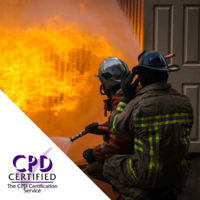 |
| Food Safety and Hygiene for Catering Level 2 |
| All about this Food Safety and Hygiene for Catering course Completing this course is the perfect way to prove your knowledge of food safety and hygiene. The certificate achieved is fully registered with the CPD Certification Service and shows your understanding of food safety procedures. Anyone that handles food within their job role is required by law to have undergone suitable food safety training. This course meets this requirement. Our Food Hygiene course is suitable for anyone that comes into contact with food or beverages in the catering sector. This includes those working in restaurants as well as people working in hotels, cafes, fast-food establishments, schools, day nurseries, takeaways and any other position where you have contact with food. You don't need to have any previous food hygiene training to do this course. In order to complete the course, you must achieve 80% or more in the final multiple choice quiz. You will earn 3 CPD points on completion of the course. Fully CPD registered Completed online with instant downloadable certificate Fully printed certificate posted next day Meets legal requirements for food handlers Covers all required legislation and practices Complete the online multiple choice assessment as many times as you need to pass Units covered Our Food Safety and Hygiene for Catering Level 2 course covers the following units: Unit 1 - Food safety and the law: In this unit you will look at the importance of food safety and the laws that are in place to protect the public. The unit covers the risks that poor food safety and hygiene poses and the responsibilities of people when working in the food and drinks industry. The enforcement of food safety laws as well as the Food Safety and Hygiene Regulations are introduced. We will then move on to look at how food safety inspections are carried out, due diligence for food handlers, HACCP principles and finally the Food Hygiene Rating Scheme. Unit 2 - Preparing Food Safely: In this unit you will learn how to prepare food safely and understand what is meant by the ‘danger zone’. You will learn about the importance of thawing, cooking, hot holding, cooling and re-heating food to safe temperatures in order to ensure that food is safe for consumption and that bacteria is not allowed to multiply and contaminate food. This information is vital to reduce bacterial growth and stop cross contamination, something which is also covered in this unit of the course. Unit 3 – Storing food safely: In this unit you will look at the importance of using reputable suppliers for dealing with food deliveries and consider the common reasons for rejecting food deliveries. We will then move on to the storage of food using refrigeration and freezing techniques. The best-before and use-by system will be covered and methods of stock rotation explained to ensure produce is as fresh as possible. Unit 4 – Food poisoning and contamination: In this unit you will look at what food poisoning means and identify those most at risk from food poisoning. You will consider the common causes of food poisoning and look at ways of preparing food for safe consumption. We will look at the most common types of food poisoning as well as different bacteria which can be present in food. This will lead us on to examine food spoilage and high risk foods. Finally the unit covers preservation of food and methods to reduce bacterial growth. Unit 5 – Hazards and allergens: In this unit you will explore the three types of hazards in the food place physical, chemical and biological and consider how hazards might get into the food chain and present a problem. You will look at how to prevent physical hazards from people, packaging, products, pests, premises and plant machinery and consider the types of chemical hazards and how these can be avoided. You will also look at biological hazards such as bacteria and viruses and understand some of the common symptoms of allergic reactions. Finally, you will explore the 14 recognised food allergens and learn how to comply with the law with regard to allergen information. Unit 6 – Personal hygiene: In this unit you will learn about the importance of personal hygiene when handling food and the impact on consumers if personal hygiene is not maintained. You will discover the important rules with regard to personal hygiene and understand the importance of wearing protective clothing and removing jewellery. Finally you will consider workplace illnesses and when these should be reported. Unit 7 – Food premises: In this unit you will understand the importance of carefully considering the layout, design and construction of food premises and learn about the regulations covering these. You will look at how to keep the premises clean at all times and learn why cleaning schedules are necessary in order to ensure that all areas are kept sanitised and that none are missed. Finally the unit will cover the common types of pests found on food premises and what can be done to eliminate them.
Price: 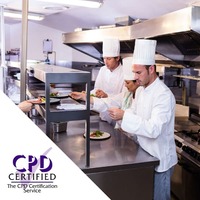 |
| Food Safety and Hygiene for Manufacturing Level 2 |
| All about this course This course is perfect for anyone working in the food manufacturing industry and teaches the necessary requirements to ensure food is safely processed. Each unit will cover a different aspect of food manufacturing as well as personal hygiene, cleaning of premises, hazards and allergens. Anybody that works with food has a legal obligation to ensure they understand food safety and hygiene. Completing a course such as this fulfils this obligation by teaching all of the necessary knowledge to work efficiently and safely within the food manufacturing industry. You don't need to have any previous food hygiene training to do this course. In order to complete the course, you must achieve 80% or more in the final multiple choice quiz. You will earn 3 CPD points on completion of the course. Fully CPD registered Completed online with instant downloadable certificate Fully printed certificate posted next day Meets legal requirements for food handlers Covers all required legislation and practices Complete the online multiple choice assessment as many times as you need to pass Units covered Our Food Safety and Hygiene for Manufacturing Level 2 course covers the following units: Unit 1 - Food safety and the law: In this unit you will look at the importance of food safety and the laws that are in place to protect the public. The unit covers the risks that poor food safety and hygiene poses and the responsibilities of people when working in the food and drinks industry. The enforcement of food safety laws as well as the Food Safety and Hygiene Regulations are introduced. We will then move on to look at how food safety inspections are carried out, due diligence for food handlers, HACCP principles and finally the Food Hygiene Rating Scheme. Unit 2 - Preparing Food Safely: In this unit you will learn how to prepare food safely and understand what is meant by the ‘danger zone’. You will learn about the importance of thawing, cooking, cooling and re-heating food to safe temperatures in order to ensure that food is safe for consumption and that bacteria is not allowed to multiply and contaminate food. This information is vital to reduce bacterial growth and stop cross contamination, something which is also covered in this unit of the course. Unit 3 – Storing, processing and preserving food: This unit will cover a number of different storing, processing and preservation methods used in food manufacturing today. The unit will cover refrigeration and freezing procedures as well as specific preservation methods. The cook-chill and cook-freeze methods will be explored as well as other methods such as soon vide, smoking, pasteurisation and sterilisation. Finally we will look at food labelling and some examples of unsatisfactory storage techniques. Unit 4 – Food poisoning and contamination: In this unit you will look at what food poisoning means and identify those most at risk from food poisoning. You will consider the common causes of food poisoning and look at ways of preparing food for safe consumption. We will look at the most common types of food poisoning as well as different bacteria which can be present in food. This will lead us on to examine food spoilage and high risk foods. Finally the unit covers preservation of food and methods to reduce bacterial growth. Unit 5 – Hazards and allergens: In this unit you will explore the three types of hazards in the food place physical, chemical and biological and consider how hazards might get into the food chain and present a problem. You will look at how to prevent physical hazards from people, packaging, products, pests, premises and plant machinery and consider the types of chemical hazards and how these can be avoided. You will also look at biological hazards such as bacteria and viruses and understand some of the common symptoms of allergic reactions. Finally, you will explore the 14 recognised food allergens and learn how to comply with the law with regard to allergen information. Unit 6 – Personal hygiene: In this unit you will learn about the importance of personal hygiene when handling food and the impact on consumers if personal hygiene is not maintained. You will discover the important rules with regard to personal hygiene and understand the importance of wearing protective clothing and removing jewellery. Finally you will consider workplace illnesses and when these should be reported. Unit 7 – Food premises: In this unit you will understand the importance of carefully considering the layout, design and construction of food premises and learn about the regulations covering these. You will look at how to keep the premises clean at all times and learn why cleaning schedules are necessary in order to ensure that all areas are kept sanitised and that none are missed. Finally the unit will cover the common types of pests found on food premises and what can be done to eliminate them.
Price: 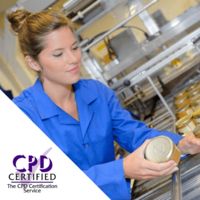 |
| Food Safety and Hygiene for Retail Level 2 |
| All about this course Working in retail as a food handler requires a strong knowledge of food safety and hygiene which is covered in detail on this course. Once completed, a fully regulated CPD certificate is achieved which is proof of your knowledge of food hygiene procedures. It is a legal requirement of anyone who handles food to ensure they have a working understanding of food hygiene. This course meets this requirement and covers personal hygiene, cleaning of premises, food contamination, hazards and the safe preparation of food. Tailored specifically for people working in a retail environment, the course is perfect for people working in a number of businesses such as a shop, bakery, butchers, supermarket, delicatessens or grocery store. You don't need to have any previous food hygiene training to do this course. In order to complete the course, you must achieve 80% or more in the final multiple choice quiz. You will earn 3 CPD points on completion of the course. Fully CPD registered Completed online with instant downloadable certificate Fully printed certificate posted next day Meets legal requirements for food handlers Covers all required legislation and practices Complete the online multiple choice assessment as many times as you need to pass Units covered Our Food Safety and Hygiene for Retail Level 2 course covers the following units: Unit 1 - Food safety and the law: In this unit you will look at the importance of food safety and the laws that are in place to protect the public. The unit covers the risks that poor food safety and hygiene poses and the responsibilities of people when working in the food and drinks industry. The enforcement of food safety laws as well as the Food Safety and Hygiene Regulations are introduced. We will then move on to look at how food safety inspections are carried out, due diligence for food handlers, HACCP principles and finally the Food Hygiene Rating Scheme. Unit 2 – Preparing food and measuring temperature: In this unit you will learn how to prepare food safely and understand what is meant by the ‘danger zone’. You will learn about the importance of thawing, cooking, hot holding, cooling and re-heating food to safe temperatures in order to ensure that food is safe for consumption and that bacteria is not allowed to multiply and contaminate food. Finally you will look at temperature controls and how to correctly measure temperatures of different food. Unit 3 – Storing food safely: In this unit you will look at the importance of using reputable suppliers for dealing with food deliveries and consider the common reasons for rejecting food deliveries. We will then move on to the storage of food using refrigeration and freezing techniques. The best-before and use-by system will be covered and methods of stock rotation explained to ensure produce is as fresh as possible. Unit 4 – Food poisoning and contamination: In this unit you will look at what food poisoning means and identify those most at risk from food poisoning. You will consider the common causes of food poisoning and look at ways of preparing food for safe consumption. We will look at the most common types of food poisoning as well as different bacteria which can be present in food. This will lead us on to examine food spoilage and high risk foods. Finally the unit covers preservation of food and methods to reduce bacterial growth. Unit 5 – Hazards and allergens: In this unit you will explore the three types of hazards in the food place physical, chemical and biological and consider how hazards might get into the food chain and present a problem. You will look at how to prevent physical hazards from people, packaging, products, pests, premises and plant machinery and consider the types of chemical hazards and how these can be avoided. You will also look at biological hazards such as bacteria and viruses and understand some of the common symptoms of allergic reactions. Finally, you will explore the 14 recognised food allergens and learn how to comply with the law with regard to allergen information. Unit 6 – Personal hygiene: In this unit you will learn about the importance of personal hygiene when handling food and the impact on consumers if personal hygiene is not maintained. You will discover the important rules with regard to personal hygiene and understand the importance of wearing protective clothing and removing jewellery. Finally you will consider workplace illnesses and when these should be reported. Unit 7 – Food premises: In this unit you will understand the importance of carefully considering the layout, design and construction of food premises and learn about the regulations covering these. You will look at how to keep the premises clean at all times and learn why cleaning schedules are necessary in order to ensure that all areas are kept sanitised and that none are missed. Finally the unit will cover the common types of pests found on food premises and what can be done to eliminate them.
Price: 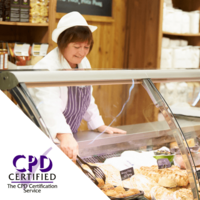 |
| Food Safety for Catering Level 3 |
| All about this course This Food Hygiene Level 3 course covers the role of managers and supervisors in food safety. The course will help to show you have an understanding on how to maintain food safety and set high standards in food businesses. In this course we will look at why food safety is so important and the consequences of not following food safety properly. The types of contamination and the ways to reduce the risks in a food environment is also covered as well as legal requirements for training and what the supervisor’s role is in training. HACCP systems are also explained in detail. Before starting this course you should have completed the Level 2 Food Hygiene for Catering qualification . You will earn 5 CPD points on completion of the course. Fully CPD registered Completed online with instant downloadable certificate Fully printed certificate posted next day Covers all required legislation and practices Complete the online multiple choice assessment as many times as you need to pass Units covered Unit 1 – The need for food safety supervisors – In our first unit we will be looking at what the role of the supervisor is, as well as why food hygiene is so important. Unit 2 – Contaminated hazards – In this unit we will be covering the types of contamination and the hazards, as well as exploring the best ways to reduce risks of hazards. Unit 3 -Micro-organisms and viruses – This unit will explore microorganisms, as well as the responsibilities of supervisors. Unit 4 – Cleaning and waste – This unit will look at the benefits of cleaning, why cleaning schedules are important and what Clean in Place (CIP) is. Unit 5 – Pest management – This unit will look at the most common pests, how to reduce the risks of a pest infestation and what to do in the event pests are found near food preparation areas. Unit 6 – Food premises – In this unit we will look at how a food premise should be planned out and what equipment should be tested. Unit 7 – Supervising food safety – In this unit we will look in more detail about what the supervisor’s responsibilities are and the essential skills they must have. Unit 8 – Training – This unit will look at what the legal requirements are for training and the benefits of staff training. Unit 9 – Safety management – In our final unit we will look at the food safety management systems and what the supervisors role is in implementing these.
Price: 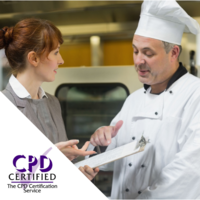 |
| Gold package |
| All about this course package This Safer Recruitment course is perfect for people who work in recruitment or are in charge or recruiting new staff for their business. It will cover all the steps you need to take in preparing to recruit, right through to when the new candidate starts their job. This course will also cover the legislation and policy that you need to be aware of when recruiting. This course will look at the best places to advertise jobs and why, how to speed up the process of sifting through applications and what the key details are to look out for. It will also look at what special requirements applicants may need and how to make sure you comply to them. This course will also look at The Equality Act 2010 and what protected characteristics means. It will also look at the types of possible discrimination organisations must be aware of in the recruitment process. Fully CPD registered Completed online with instant downloadable certificate Fully printed certificate posted next day Covers all required legislation and practices Complete the online multiple choice assessment as many times as you need to pass Units covered Unit 1 – Preparing to Recruit – In our first unit we will be looking at the early stages of recruitment and what the importance of the job description, as well as the person specification in getting the right applicants for the role. Unit 2 – The Selection Process – This unit will be looking at the process that takes place once job adverts have been replied to, as well as ways in which organisations can ensure they are not acting in a discriminatory way. Unit 3 – The Interview Process – In this unit we will be looking at what happens once candidates have been chosen to take part in an interview, as well as some questions and techniques that organisations can use to ensure they choose the most appropriate candidate. Unit 4 – After the Interview – In this unit we will explore the processes that an organisation puts into place once initial interviews have been completed, it will also look at contacting referees and the types of references. Unit 5 – Pre Appointment – In this unit will be looking at the importance of checks, including DBS checks, criminal record checks, as well as health checks. It will also look at how to ensure a candidate is eligible to work in the UK legally. Unit 6 - Starting Employment - In our final unit we will look at the importance of ensuring health and safery in the work place, as well as what happens during probationary period, as well as the benefits of them being supervised.
Price: 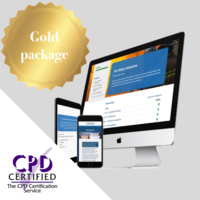 |
| Health and Safety CPD bundle |
| Certificates for courses in this bundle are downloadable only - a hard copy is not sent to you. All about this course bundle This Health and Safety CPD package allows users to access a range of health and safety courses all from their account. Perfect for anyone working in a role where they need to continually show their competence, students on this package can access training on COSSH, Ladder Safety, Fire Safety, RIDDOR and much more. With this package, your CPD requirements in health and safety are completely covered. Having up-to-date CPD is a requirement of many roles in a variety of industries including manufacturing, engineering and maintenance. All courses in this package are completely CPD approved and carry the prestigious CPD Certification Service approval. This means they are internationally recognised as proof of continuous professional development and are accepted by all industry bodies as proof of your competence. Fully CPD registered Completed online with instant downloadable certificate Multiple courses included Covers all required legislation and practices Complete the online multiple choice assessment as many times as you need to pass 12 month access Courses covered
Price:  |
| Health and Safety Level 2 |
| All about this course This health and safety course covers a large number of different areas and is designed for new and existing employees to develop their knowledge of safe practices in the workplace. In order to ensure a safe and harmonious working environment, all employees should have a strong knowledge of health and safety legislation. This course covers hazards and risks as well as how to carry out risk assessments, something which is required when any business has more than 5 employees. In order to complete the course, you must achieve 80% or more in the final multiple choice quiz. You will earn 3 CPD points on completion of the course. Fully CPD registered Completed online with instant downloadable certificate Fully printed certificate posted next day Great all-round knowledge of health and safety in a business Covers all required legislation and practices Complete the online multiple choice assessment as many times as you need to pass Units covered Unit 1 – Health and safety legislation: In this first unit of the course we will consider what health and safety is and the reasons why health and safety precautions are taken. We will also look at the origins of health and safety legislation to get a strong background knowledge of where this area of law came from. The Health and Safety at Work Act will be explored in full as well as the ‘Six Pack’ regulations, Health and Safety Executives and Approved Codes of Practice. Unit 2 – Risks in the workplace: In this unit, you will be introduced to the concepts of hazard and risk and the key differences between the two. The unit covers various different hazards as well as methods to minimise these. Next we will move on to hazard control, fire hazards, accidents and incidents before finishing up with a look at welfare at work. Unit 3 – Assessing risk: This unit will introduce the meaning of risk assessment and what the law requires. You will also consider what constitutes a suitable and sufficient risk assessment. Here we will look at the steps involved in risk assessments and how to work out the probabilities of accidents happening. This probability will then be used to show how precautions can be put in place to ensure that high level risks are sufficiently minimised. Unit 4 – Equipment in the workplace: Next we will explore different types of equipment that can be used in the workplace and the risks involved with each of these. Provision and Use of Work Equipment Regulations (PUWER) will be covered in this section of the course and we will take a good look at a variety of different types of machinery you may come across. We will then look at PPE (Personal Protection Equipment) that can be used with this machinery to reduce the risks involved with these. Unit 5 – Manual handling and ergonomics: This unit will consider the meaning of ergonomics and the associated hazards. You will cover manual handling and workstations which includes display screen equipment. Various manual handling techniques and risks will be covered here as well as types of PPE that can be used to reduce risk. Display Screen Equipment will also be covered and the ways in which workstations should be laid out to avoid injuries to workers. Unit 6 – Hazardous substances, fire, electricity: This unit will look at hazardous substances, fire and electricity to give an understanding of how each one poses a threat. The unit will include asbestos awareness, COSHH and precaution that should be put in place to reduce the risk of fire and electricity. We will also cover various equipment and maintenance that is used to reduce injuries. Unit 7 – Working at height, noise, vibration: The final unit of this course is focused on height risks, noise and sound. We will look at all three of these risks and precautions that should be put in place to reduce the harm they cause. Here we will start with the various risks posed when working at height and types of ladders which can be used. Next we will look at how high noise levels can damage a person’s hearing and the types of PPE that can be used to reduce this risk. Finally we will look at vibration in the workplace and how levels should be monitored.
Price: 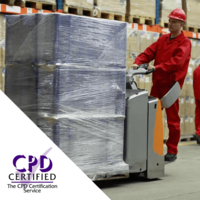 |
| Infection Control |
| All about this course Understanding how to prevent exposure to microorganisms, as well as having effective cleaning procedures in place and how to deal with spillages, is essential when working in care. This course will explain all the policies, procedures, systems and legislations in place which are vital for care workers to know. It will also cover the most common infections and what to do in the event of infection control measures failing. The course is perfect for anyone working in care including doctors, nurses, care workers, porters, receptionists in care settings, as well as anyone else that works in a hospital or care environment. In order to complete the course, you must achieve 80% or more in the final multiple choice quiz. You will earn 3 CPD points on completion of the course. Fully CPD registered Completed online with instant downloadable certificate Fully printed certificate posted next day Covers all required legislation and practices Complete the online multiple choice assessment as many times as you need to pass Units covered Unit 1 – Introduction to Infection Control – This first unit will explain what an infection is and the types of infections that exist, as well as explaining the consequences of infections and how people who work in a clinical setting could be affected. Unit 2 – How Infections are Spread – The next unit will look at what a ‘chain of infection’ is and how infections can be spread via direct or indirect transmissions and the effects this can have on people that are already poorly. Unit 3 – Infection Control Measures – The third unit will consider the importance of basic hygiene for controlling infections. It will explain the importance of personal protective equipment (PPE) and how it can reduce the risk of cross contamination. Unit 4 – Assessing and Reporting Breaches in Infection Control – The final unit will look at ‘healthcare associated infections’ and how employees that work in care can be affected. It will also look at how a risk assessment should be carried out and the procedures in place if there is a breach in infection control measures.
Price: 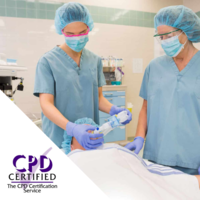 |
| Ladder safety |
| All about this course In this ladder safety course, we will be looking at the job roles and industries that use ladders and stepladders. We will look at the legislation that surround working at height and the use of ladders and stepladders. We will explore the requirements of The Reporting of Injuries, Diseases and Dangerous Occurrences Regulation (RIDDOR) 2013 in relation to accidents and injuries involving ladders and stepladders. We will explore the steps of a risk assessment and why it is important to carry out a risk assessment. Finally, we will look at what should be considered in an emergency rescue plan. In order to complete the course, you must achieve 80% or more in the final multiple choice quiz. You will earn 3 CPD points on completion of the course. Fully CPD registered Completed online with instant downloadable certificate Fully printed certificate posted next day Covers all required legislation and practices Complete the online multiple choice assessment as many times as you need to pass Units covered Unit 1 – Introduction to ladder safety – In our first unit we will look at some of the consequences, as result of accidents involving ladders and stepladders. We will also look at statistics relating to falls from height, ladders and stepladders. Unit 2 – Key legal requirements and responsibilities – This unit will explore the different legislations that apply to work at height on ladders and stepladders and what the requirement of each legislation are. Unit 3 – Identifying, assessing and controlling risks – In this unit we will explore what a risk assessment is and look at the meaning of hazard and risk. We will explore the steps of a risk assessment, as well as considering why a risk assessment is so important. Unit 4 – Safety aspects for consideration – This unit will consider how to chose the correct ladder and the consequences of choosing the incorrect ladder. We will also explore the requirements for ladder maintenance. Unit 5 – Ladder use – In this unit we will look at the hazards of handling and carrying ladders. We will also look at the precautions that can be put in place. We will finish off with looking at some of the ‘Do’s’ and Don’ts’ of working with ladders. Unit 6 – Training and safety equipment – This unit will look at ladder and stepladder training in further detail. We will also look at what PPE is and the types that are used for working on ladders and stepladders.
Price: 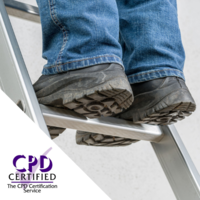 |
| Management Level 3 |
| All about this course This course is perfect for anyone looking to take a step up to management level. Our Management level 3 course will cover the best ways to solve problems in the workplace, manage and deal with conflict that may occur, help keep staff motivated in their jobs and how to plan and organise for a meeting. We will also look at managing change in the workplace and developing employees to get the best from a team. This course is suitable for new managers wanting to learn more, as well as managers that have years experience and want to refresh their memory. Before starting this course it is recommended that you should have completed the Team Leading qualification. You will earn 5 CPD points on completion of the course. Fully CPD registered Completed online with instant downloadable certificate Fully printed certificate posted next day Covers all required legislation and practices Complete the online multiple choice assessment as many times as you need to pass Units covered Unit 1 - Decision Making and Models of Management - In our first unit we will be exploring the best ways to set objectives when decision making, we will also look at the different tools that can be used to help keep objectives clear. This unit will finish off by looking at the steps that can be followed to monitor performance of your team. Unit 2 - Solving Problems - In our second unit we will be looking at the SWOT and PESTLE analysis and how using these can be beneficial to a business, we will also look at the different constraints that can occur in a organisation and the best ways to deal with them. Unit 3 - Equality and Diversity - In this unit we will be explore the importance of equality and diversity in the workplace, we will also look at how to include equality, diversity and inclusion into the different policies used in workplaces. This unit will finish off by looking at the consequences of breaching the equality legislation. Unit 4 - Motivation and Employee Development - This unit will look at the benefits of employee development to an organisation and the employees, this unit will also look the rewards that can be offered to employees to keep them motivated, we will consider the positives and negatives to this as well. Unit 5 - Managing Conflict - This unit will explore why conflict occurs and the best ways to deal with conflict in the workplace, we will consider the skills that managers need to have to be able to successfully resolve conflict. This unit will finish off by exploring who ACAS are and when they can be used. Unit 6 - Understanding business - This unit will explore the different markets that businesses can operate in, we will also look at business innovations and the advantages of having budgets and the best way to manage budgets. Unit 7 - Change Management - This unit will look at the positive and negative effects that change can have on workers, as well as the benefits that change can have to an organisation. We will also explore the best ways to review the effects of change and how to support individuals who may be struggling with the transition. Unit 8 - Meetings - In our final unit we will be covering everything that you need to know when taking minutes of a meeting and planning a meeting. We will also cover the issues that could occur in a meeting, how to minimise them and the legal implications of a meeting that can occur.
Price: 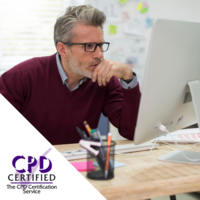 |